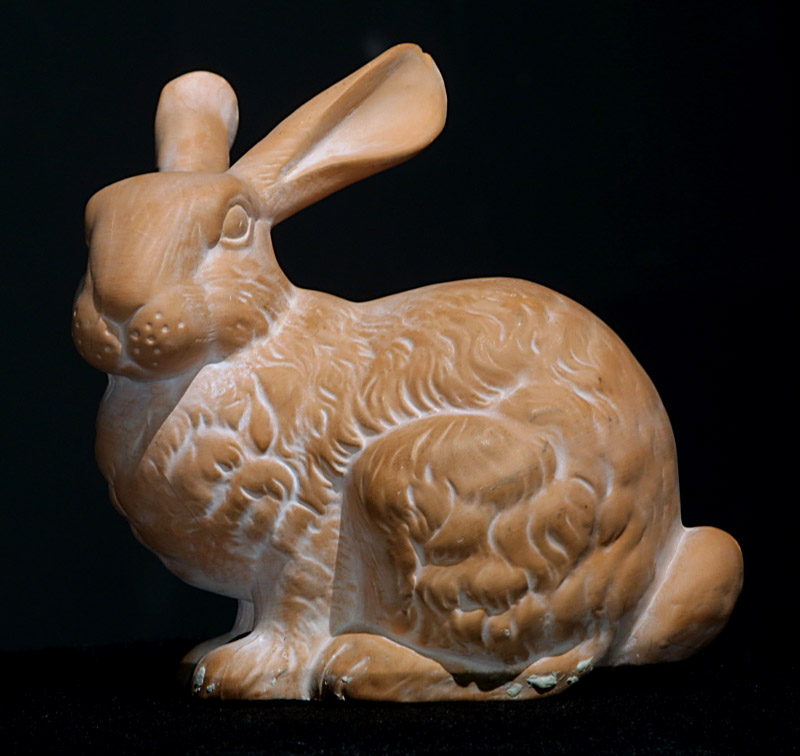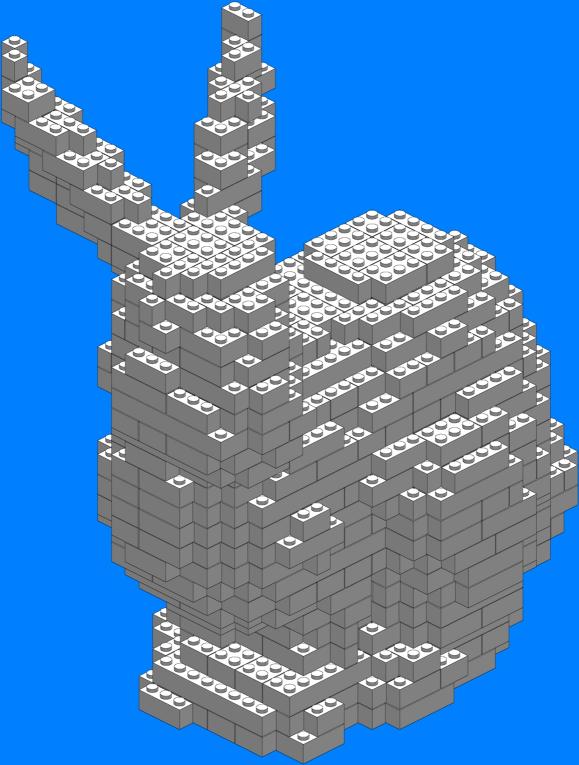DAQE said:

The Stanford Bunny is a computer graphics 3D test model developed by Greg Turk and Marc Levoy in 1994 at Stanford University.
The Bunny consists of data describing 69,451 triangles determined by 3D scanning a ceramic figurine of a rabbit. The data can be used to test various graphics algorithms; including polygonal simplification, compression, and surface smoothing. By today's standards in terms of geometric complexity and triangle count, it is considered a simple model. There are a few problems with this dataset that can occur in any 3D scan data. The problems are that it is manifold connected, and that it has holes in the data (some due to scanning limits and some due to the object being hollow). Though being "problems", they provide a more realistic input for any algorithm that is benchmarked with this bunny.
The model was originally available in .ply (polygons) file format with 4 different resolutions, 69,451 polygons being the highest.
The Stanford Dragon consists of data describing 871,414 triangles- (contains 12.55 X the triangles of the bunny

























